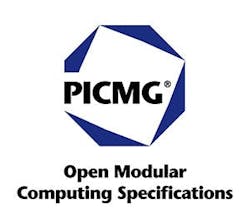Doug Sandy is the CTO of PICMG, an industry consortium focused on developing open and modular computing specifications. He, along with dozens of member companies who participated in the development of the upcoming COM-HPC specification, believes that engineers building edge systems need new hardware.
“Between converged network rollouts and advances in AI, the hardware requirements for edge computing have changed,” Sandy says. “Modern edge workloads need a combination of high-end compute, managed power consumption, and low-latency data transmission.”
These merging requirements led PICMG to pursue a new standard for high-performance computing. The result is COM-HPC, a computer-on-module specification that brings unprecedented computing power and I/O bandwidth to resource-constrained applications.
First ratified in 2021, COM-HPC has expanded to address various uses case. Most recently, COM-HPC Mini was created to address small form factor applications. “COM-HPC Mini introduces a credit-card-sized form factor with features like expanded connectivity support, efficient thermal management, and soldered memory,” explains Sandy.
COM-HPC Mini complements the consortium’s well-established COM Express specification, but introduces a number of major advances. To help designers take advantage of the new capabilities, PICMG is launching the free COM-HPC Mini Academy. This four-part series will teach developers everything they need to know about the specification.
Session 1: What’s New in COM-HPC?
The first Mini Academy Session, co-hosted by representatives from congatec and Samtec, provides an update on COM-HPC and how it can help organizations transform their edge infrastructure. Alongside updates to the COM-HPC specification family, the session will explore potential for PCIe Gen 6 support and Functional Safety (FuSa) capability.
Session 2: Introducing COM-HPC Mini
Co-presented by Richard Pinnow of ADLINK and Christian Engels of Avnet Embedded, the next session will detail how COM-HPC Mini provides system architects greater speed and performance in a smaller form factor. Participants can expect a review of the new specification’s electromechanical features, followed by demonstrations of how those features can be leveraged in far edge mobile and battery-powered use cases such as AMRs, HMIs, drones, and robotic controllers.
Session 3: Exploring the COM-HPC Mini Design Guide
Presented by Kontron’s Peter Hunold, this session introduces an updated Carrier Design Guide developed specifically for the COM-HPC Mini specification. Participants will be given an overview of how the COM-HPC Design Guide has changed from previous versions. The session will also demonstrate how to design in advanced signals such as multiplexed USB 4.0 and quickly and efficiently produce Gerber files that define lasting COM-based systems.
Session 4: A Multi-Vendor Outlook Panel
Co-hosted by several of the suppliers responsible for developing the COM-HPC Mini specification, this panel discussion will field questions from attendees about designing and deploying the new standard. Anticipated discussion topics include the differences between COM Express and COM-HPC, best practices for designing COM-HPC Mini into real-world applications, as well as insights into PICMG’s technology roadmap.
Register Now to Begin Your Journey
The COM-HPC Mini Academy kicks off on Tuesday, June 4 at 7:00 PDT/14:00 UTC. Recordings of the sessions will be available on-demand for those unable to attend the live event.
Don’t miss out on this opportunity to learn about the next evolution in edge computing.


